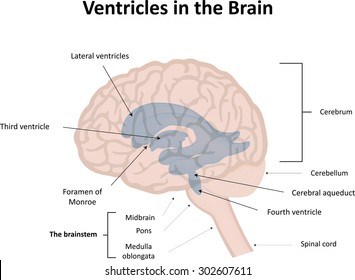Bobble-head doll syndrome (BHDS)
- Sakshi Deshpande

- Dec 30, 2021
- 3 min read
Yes, you read that right! Bobble-head doll syndrome referred to as BHDS is a rare movement disorder in which your head moves side to side at the frequency of 2-3 Hz that increases during walking and excitement and decreases during concentration. The cause of this syndrome is neuronal obstruction of ventricle communication. The ventricles of the brain are a communicating network of cavities filled with cerebrospinal fluid (CSF) and located within the brain parenchyma ( the functional tissue in the brain) and when these are obstructed by expansile lesions in the third ventricular region it results in these erratic head movements(a lesion is any damage or abnormal change in the tissue of an organism). What causes these lesions however has still not been discovered.
Symptoms and Treatment
There are no direct symptoms of BHDS except for the obvious head movements but it is often accompanied by conditions such as hydrocephalus (the buildup of fluid in the cavities) caused by cysts in the third ventricle of the brain (a sac-like pocket of membranous tissue that contains fluid, air, or other substances). there is compression of the medial thalamus (a large nucleus in the thalamus that is associated with memory), the pressure over the medial thalamus leads to head and neck tremors, and as the lesion progresses, it gives rise to truncal and appendicular tremors(head bobbing) Attenuation of tremors on voluntary activities and their presence at rest suggest a possible role of basal ganglia( responsible primarily for motor control) in the formation of this disorder. It is also suggested that the movement develops as a learned phenomenon as it stops on volitional activities. This probably helps in improving the CSF circulation and is supported by the observation of the disappearance of head movements and headache on extreme bending of joints or extension of the neck in a case with BHDS.
Detection and Treatment
BHDS has a visible presentation of symptoms such as the continuous nodding of the head however the fluid pressure inside is unknown and can be fatal.
Normally doctors conduct nervous symptom examinations and then move on to more detailed investigations.
MRI with contrast and CT scans are conducted to detect any cysts and some use cisternography to observe obstruction in cerebrospinal fluid (CSF) flow among ventricles. This is the easiest way to check for the fluid build-up and ventricle obstruction in the brain.
Bobble-head doll syndrome is treated according to the obstruction present. In the case of choroid plexus papilloma, the lesions are removed surgically and the patient usually makes a full recovery. Next, placing a Ventriculoperitoneal shunt to drain the fluid is also a common procedure where a tube is placed to drain the excess fluid into the abdomen. However, there are many reports of patients experiencing side to side movements (rather than front to back) after only one year leading many to believe that there are malformations of the brain responsible for this syndrome too.
If caught and treated early there is a good prognosis for the patient as the symptoms will go away immediately with no long term effects however a long wait to get treated can result in permanent and severe hydrocephalus.
Lastly, in a few cases, the obstruction is caused by suprasellar arachnoid cysts and these are removed by Endoscopic ventricular cysto cisternostomy This is a procedure where only the membrane of the cyst is opened and the fluid is drained, this surgery is done to treat suprasellar arachnoid cysts.
A Case Study
This is a summary of the rare case of bobble head doll syndrome presented on a child named Mickey. He reported with the progressive bobbing of his head, an MRI scan with contrast was immediately ordered and it showed a very large suprasellar arachnoid cyst in a deep part of the brain, the third ventricle. The cyst was benign but due to its size, it had blocked the CSF from draining leading him to have hydrocephalus as well.
An endoscopic ventricular cysto cisternostomy was performed, this is a minimally invasive surgery so it left Mickey with a less than half an inch incision which healed quickly and Mickey’s BHDS went away immediately.
Bobblehead dolls syndrome, also known as ‘yes-yes’ syndrome is a rare and fascinating movement disorder but it is not difficult to treat. It shouldn’t be overlooked as delayed treatment leads to permanent damage.
Written by: Sakshi Deshpande
Edited by: Svasti Tewari
Citations
https://rarediseases.info.nih.gov/diseases/9731/bobble-head-doll-syndrome#:~:text=Bobble%2Dhead%20doll%20syndrome%20(BHDS,excitement%20and%20decrease%20during%20concentration.
https://www.broadcastmed.com/neurology/7419/videos/a-rare-case-of-bobble-head-doll-syndrome








Comments